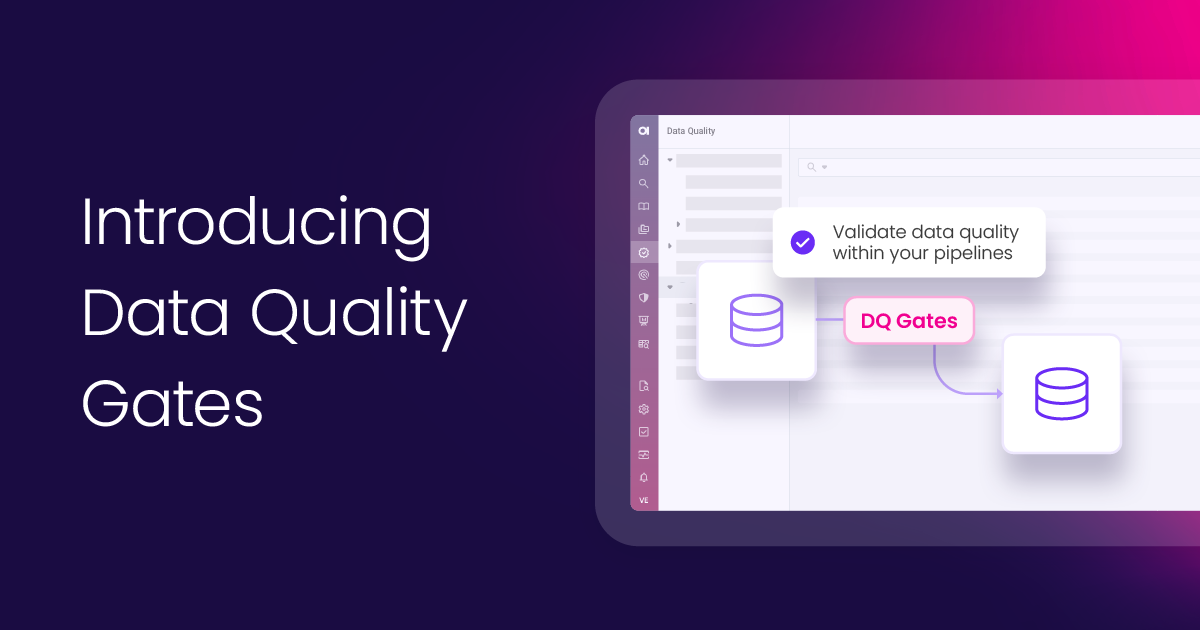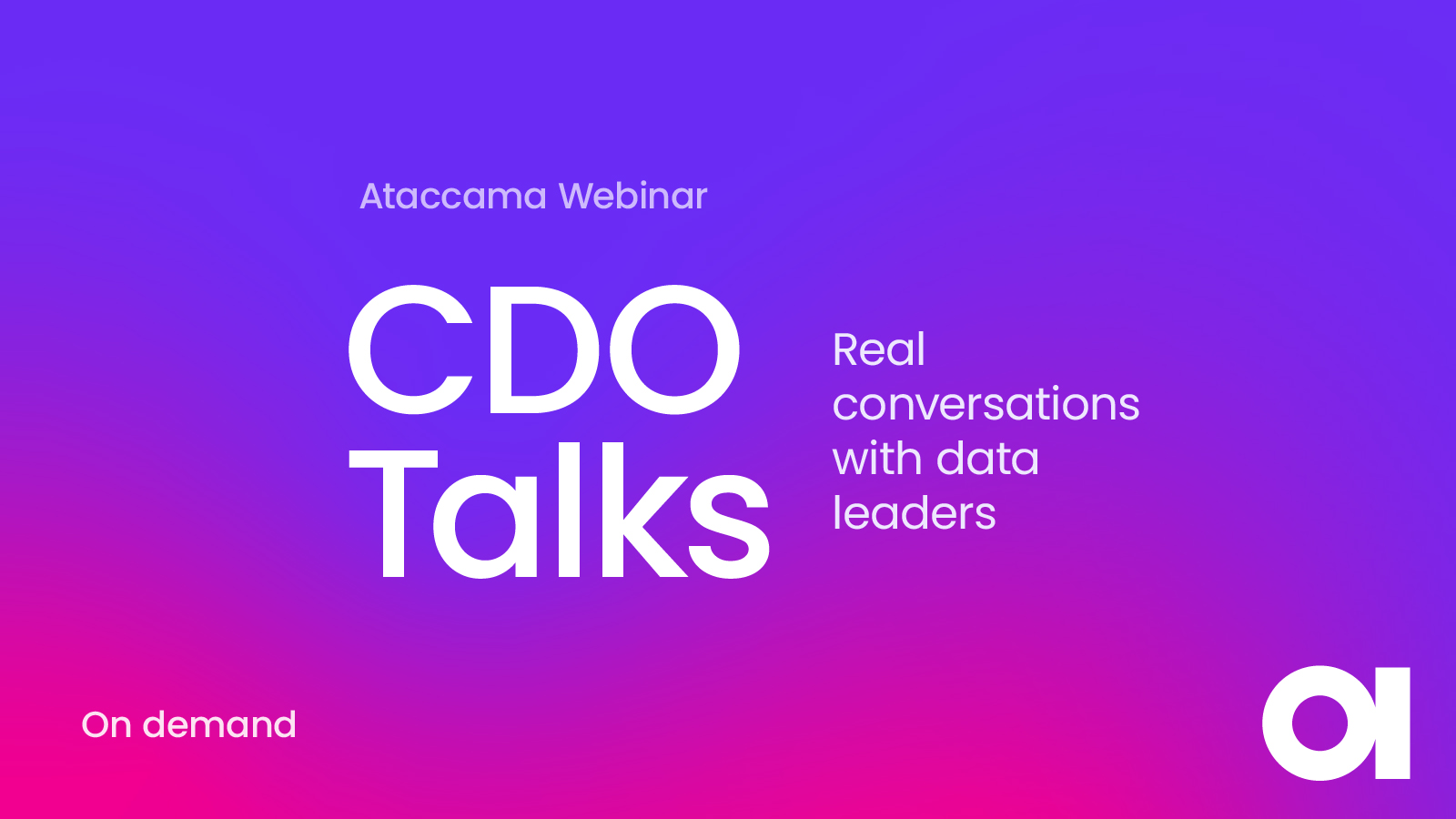Master data management (MDM): What it is & why it’s important

If you’re here, it’s because you are aware of the importance of properly managing your data. You might be a data professional mandated to deliver a priority business initiative. Or maybe you’re a business leader responsible for one or more critical business processes heavily reliant on data. In either case, if poor quality, messy, and duplicated data is holding you back, you’re in the right place.
From building customer self-service apps to enhancing customer segmentation or offering highly adaptable predictive models that drive cross-sells, there are many situations where having consolidated data is a must. But is it critical to manage one type of data over others?
Read this guide to learn the ins and outs of (MDM) Master Data Management, why master data management is important, a concrete list of benefits, how to select the right master data management program, and how to get the necessary buy-in. Start browsing below to learn everything you need!
Table of Contents
What is master data management (MDM)?
Master data management (also referred to as MDM) is a discipline that relies heavily on data governance frameworks to increase the quality, uniformity, accuracy, and accessibility of an organization’s data.
MDM can help drive tangible value for some of the most critical business or operational processes (customer success, logistics, sales, marketing, etc.). It helps consolidate core business entities like customers, products, and suppliers, offering a consistent source of business data for accurate reporting and decision-making.
What is master data?
Master data (or a master record) is also known as the “golden record” of information within a data domain – the most truthful, high-quality data. There are different types of data domains for master data, and they are defined by their own set of attributes or unique characteristics. Here is a preview with some examples:
| Domain | Attributes |
| Customer | (Both B2B/B2C) First name; last name; address; postal code; buying preferences, Service-Level-Agreements |
| Product | Product code; color; size; design; storage (SKU) |
| Location | Addresses; type of location (e.g., consumer, warehouse, retail location); logistic coordinates (geocoding) |
Since it’s your most important data, managing your master records is essential to any data management initiative. Read more to learn about the 3 most common data domains and MDM programs.
Why is master data management important?
MDM has a broader mission that goes beyond governing master data and enabling reference data management. MDM’s ability to centrally merge and govern data from any enterprise system brings powerful business benefits in the areas of operational effectiveness, regulatory compliance, and customer segmentation.
1. Operational effectiveness
Maintaining a unified view of your master data can increase efficiency across many business operations. Enhancing data quality management and consistency leads to fewer errors that can slow down processing and compromise service delivery from your data professionals.
Implementing a master data management program will:
- Streamline workflows
- Reduce IT overhead by automating data management processes
- Increase straight-through processing rates (automated processes done purely through electronic transfers with no manual intervention involved)
- Lead to faster decision-making enabled by a centralized and accurate view of your master data
2. Regulatory compliance
Regulatory compliance requires your company to follow the rules and regulations set up by governing authorities regarding the data you collect. A master data management program can help by improving data governance, enhancing data security, and maintaining accurate audit trails (should your company fall under a data audit).
It also aids in optimizing reporting practices and makes it easier to manage customer consent changes. MDM functionalities like data anonymization are beneficial when maintaining compliance with regulations such as GDPR.
3. Customer segmentation
Customer segmentation involves dividing customers into smaller groups to apply marketing activations more precisely. A master data management program makes this easier by providing a singular customer view that keeps consistent data across all channels.
Having a consolidated, up-to-date golden record of each customer allows organizations to move data easily from their main system to various environments.
They can then enrich those records with more complex attributes from external sources and third-party applications. This significantly reduces the go-to-market time for client-facing campaigns and enables more reliable predictive analytics.
Master data management (MDM) benefits

To recap what we explained so far, a master data management framework is crucial for categorizing, deduplicating, and consolidating critical business data (products, customers, suppliers, and more). It can help drive tangible business value if it’s properly consolidated, but when left unmanaged it can lead to slow operational processes.
That’s why aligning your MDM strategy with your business objectives and data initiatives is not just beneficial. It’s imperative as it can lead to substantial improvements on both fronts. If you have big business goals in mind, then turning the data chaos in your organization into clarity is a must.
Using MDM to achieve business objectives
Master data management empowers your business to reach new heights by streamlining critical data and allowing you to align it with strategic goals. Through improved data accuracy, visibility, and accessibility, MDM unlocks opportunities for you to:
- Grow market share: By providing a single source of truth for your customer data, MDM can help you better understand your customers and target your marketing campaigns more effectively. This can lead to increased sales and market share.
- Expand customer footprint: MDM can help you expand your customer footprint by making it easier to identify and track new customers. This can lead to increased revenue and profitability.
- Reduce cost & improve efficiency: MDM can help you reduce costs by eliminating duplicate data and streamlining your business processes. This can lead to increased efficiency and productivity.
- Mitigate regulatory and security risk: MDM can help you mitigate regulatory and security risk by ensuring that your data is accurate and compliant with all applicable regulations. This can help you avoid fines and penalties.

Build stronger data initiatives for improved business outcomes
A master data management program serves as the backbone of robust data initiatives, transforming your organization’s relationship with data. MDM empowers your business to unlock the full potential of your data by:
- Overcoming lack of trust in data: MDM can help you overcome the lack of trust in data that is often seen in organizations. By providing a single source of truth for your data, MDM can help you ensure that your data is accurate and reliable.
- Solving data silos and integration challenges: MDM can help you solve data silos and integration challenges by providing a central repository for your data. This can make it easier to access and share data across different departments and systems.
- Eliminating data duplication: MDM can help you eliminate data duplication by identifying and consolidating duplicate records. This can save you storage space and improve the performance of your systems.
- Reducing manual tasks and resource shortages: MDM can help you reduce manual tasks and resource shortages by automating data cleansing and integration processes. This can free up your employees to focus on more strategic work.
By addressing data challenges like data duplication, siloed information, and manual processes, MDM fosters an environment of trusted, accessible, and actionable data to help you align business objectives and data initiatives.
From achieving AI readiness to enhancing customer relationships, a master data management framework is instrumental in driving market share growth and operational efficiencies for organizations with large volumes of data.
See the full list of master data management (MDM) benefits here!
Getting started with master data management software
The importance of reliable data management cannot be overstated. If you want to achieve greater market share and operational efficiency, you need to invest in a master data management program.
Now that you’ve gotten everyone in your organization excited about the potential of MDM, it’s time to ensure you’re on the right track. For that, we created this MDM readiness checklist you can use and share with your colleagues
Ataccama’s master data management software features industry-leading capabilities, embedded data quality and governance, and a native platform architecture that makes it seamless to integrate across various modules.
Get in touch with our team today for more details on how we can support you as your go-to MDM solution!
Adrian Vicol
Adrian is our Product Marketing Manager for Master Data Management at Ataccama. With a sales and marketing background, he always strives to solve business needs and put clients first in everything he builds.







